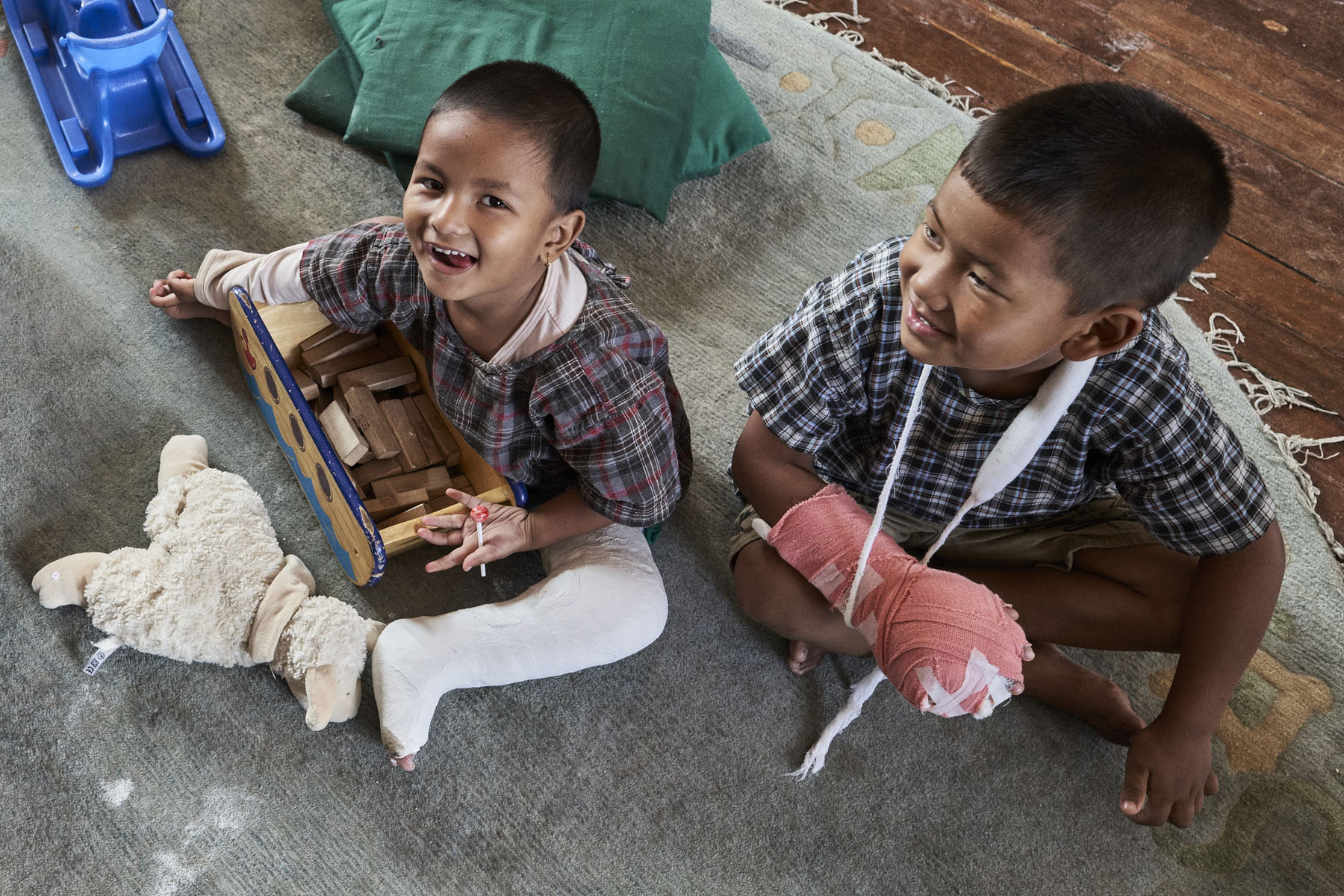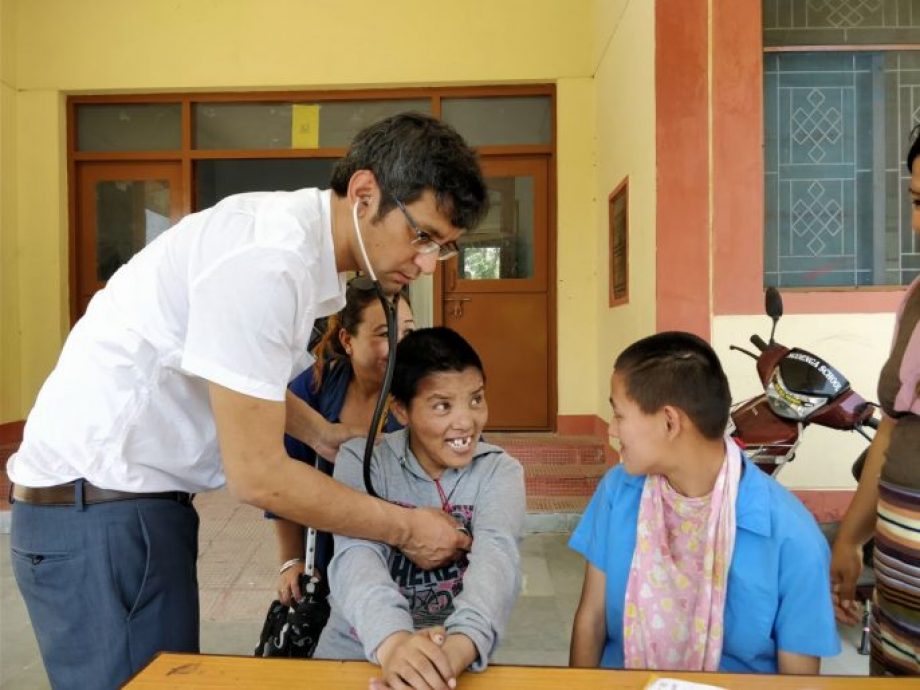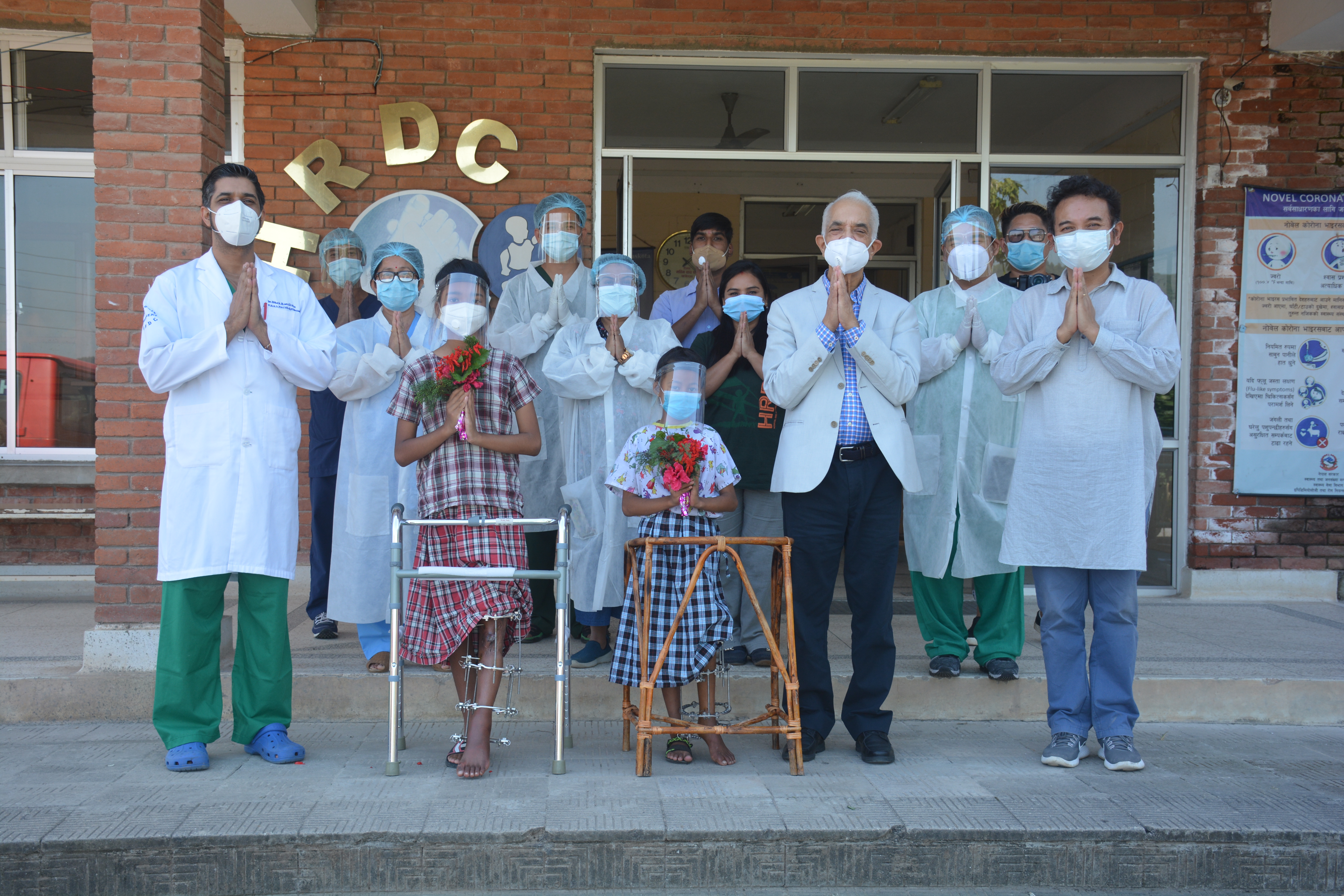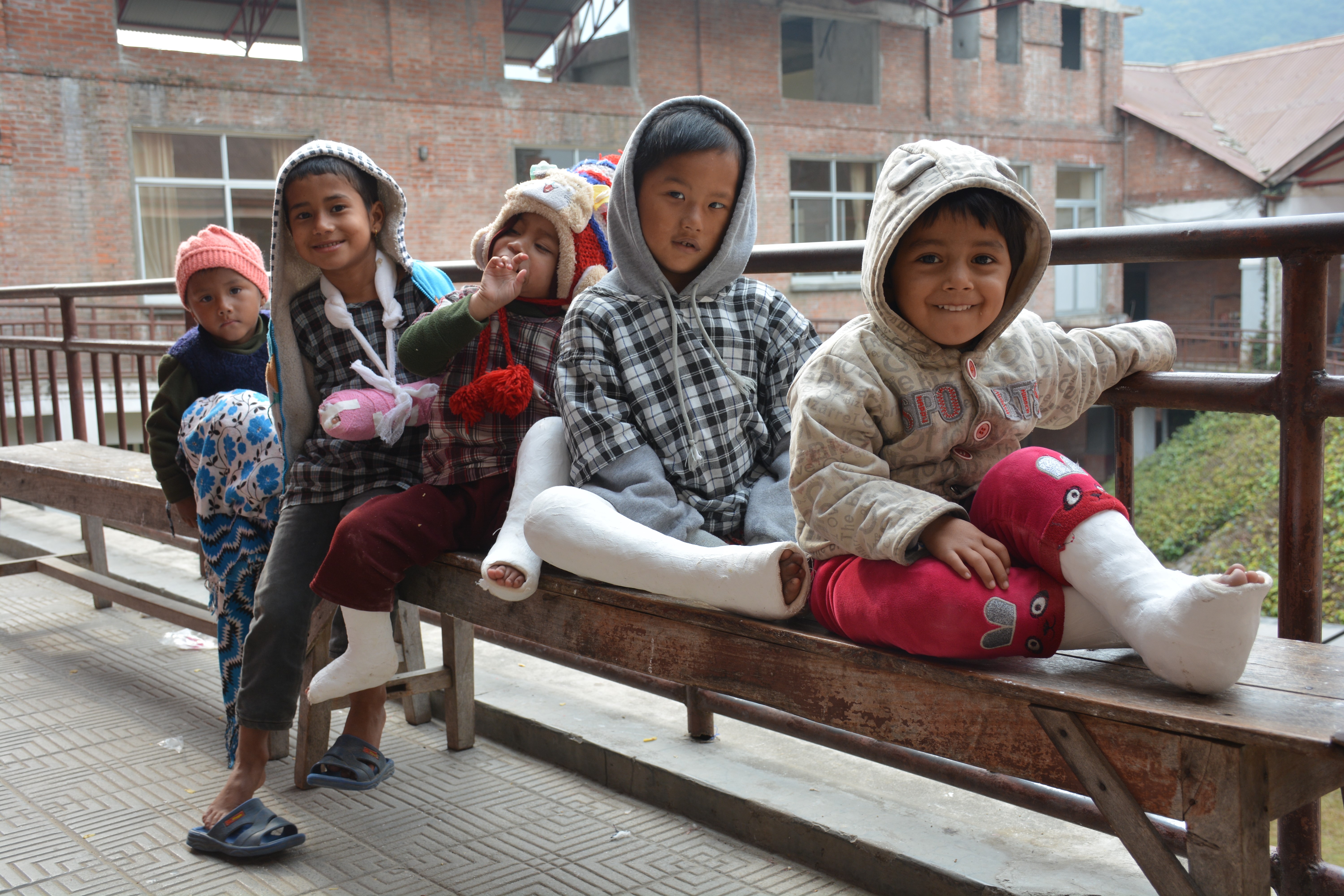Compassionate care, every day

At the Hospital and Rehabilitation Center for Disabled Children (HRDC) on the outskirts of Kathmandu, it has been another busy year transforming thousands of young lives. Our partner Dr. Ashok Banskota’s effort started in a small makeshift facility and has become a world-class pediatric orthopedic hospital serving Nepal’s most disadvantaged children, screening and treating more than 20,000 patients per year.
No matter where they live in the world, a child with a physical disability experiences struggles that many of us will never have to face. In Nepal, these difficulties are compounded by the country’s challenging terrain, scarcity of health clinics, and deep poverty. As a hospital dedicated to caring for children with disabilities, HRDC’s medical team is committed to meeting each child’s unique needs to heal both body and mind.
Healing the Body
Last year, HRDC was able to change thousands of children’s lives. Here is a snapshot in numbers:
- 26,654 consultations at the hospital or in the field; 8,340 were new patients and 18,314 were follow-ups.
- 2,077 children admitted to HRDC as in-patients.
- 2,322 surgical interventions.
- 551 clubfeet treated non-surgically with the Ponseti method.
- 3,824 children equipped with assistive devices.
- 78,300 physiotherapy sessions conducted for 16,708 children.
Nourishing the Mind
HRDC is dedicated to healing the whole child. It is extraordinary work that has a transformative impact, giving a child the chance to walk to school and play with their friends for the first time – and live a pain-free life.

Education, of children and their families, is also integral to HRDC’s mission. To make sure children don’t miss out on their education while they are in treatment, HRDC started a school in the hospital in 2014. With three in-house teachers, classes are offered for children from pre-school to grade 12. So far, 1178 kids, including 526 girls, have benefited from the HRDC school. Social inclusion of the disabled has also been an important part of the work that HRDC is doing, in the classroom and in the world. They work with communities across Nepal and with families of children with disability to raise awareness about preventable disability and offering lessons on overcoming social stigma.
“Miracles” at HRDC
Click to enlarge and see full description.
Just a year ago, it seemed Shanta’s daughter Saraswati was destined for a life of hardship. Shanta’s husband passed away years ago, leaving her with five children to raise alone. As a widow without a permanent source of income, she struggles to find daily work and take care of her family’s needs.
Saraswati’s disability was first noticed when she was a baby and had difficulty crawling. Later on, at school and in her village, children mocked her inability to walk normally. She felt anxious and ashamed. But her family’s poverty made treatment impossible. When a local health worker learned of Saraswati’s situation, he referred her to HRDC.
Hopeful, Shanta and Saraswati traveled to the main HRDC campus near Kathmandu. Saraswati was diagnosed with two conditions: the rare Arthrogryposis Multiplex Congenita, which causes multiple joint contractures affecting two or more areas of the body prior to birth, and bilateral clubfoot.
She was admitted immediately, undergoing a successful surgical intervention and receiving corrective braces for both her feet. While at the hospital, Saraswati was able to continue her studies on site at the HRDC School.
Back in school, the now sixth grader walks and participates in ways she had only dreamed of. Motivated by her experience, she wants to become a social worker. “What has happened to me is nothing short of a miracle,” she says. “Everything is possible at HRDC,” she added, beaming with joy, a new found confidence, and gratitude.
HRDC Is Growing
HRDC has been bursting at the seams. In 2017, average bed occupancy was 99%, up from 85% in 2016. Patient wait times are growing. So, a much-needed new patient ward and a sixth operating room is nearing completion. The new patient ward will increase the number of beds from 74 to 100, and the new operating room adds critically needed surgery capacity. Both the OR and the new patient ward are scheduled to be ready by the end of 2018. HRDC currently performs about 18 surgeries per week. With the sixth operating room, HRDC will be able to perform up to 25 surgeries weekly. The skilled surgeons operating every week work at a different private hospital and donate two days of their week to HRDC.
As HRDC grows, it remains more committed than ever to its guiding philosophy: enabling abilities with compassionate care.


